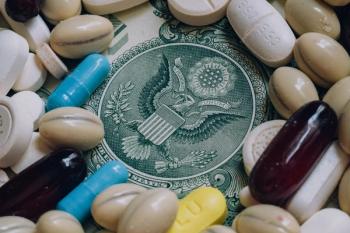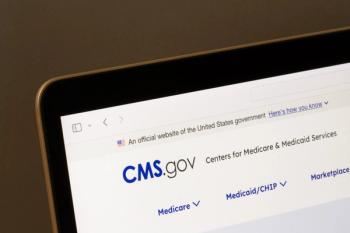
- Drug Topics February 2018
- Volume 162
- Issue 2
Urinary Incontinence: What Pharmacists Should Know
Up to 30% of the population is affected by the problem, this peer-reviewed article will give you the information you need.
Urinary incontinence (UI), the involuntary leakage of urine, is a frequent and problematic chronic condition for many patients. An estimated 10 to 30% of men and women are affected nationally, though this may be underestimated due to underdiagnoses and undertreatment.1-3
Often, patients who suffer with UI symptoms will develop poor self-rated health, depression, and mobility disability.4,5 This comorbid disease state also presents a substantial financial burden; data from 2014 found that in the United States alone, an estimated $65.9 billion in direct and indirect costs were spent for UI treatment.3
UI can present as transient and reversible, or it can be established and chronic. There are four main types of UI–stress, urge, overflow, and functional incontinence.6 These incontinence subtypes differ based on the symptom presentation as shown in Table 1. Based on definitions from the Abrams et al. report (2002), stress incontinence is defined as the “involuntary loss of urine on effort or physical exertion or on sneezing or cough.” Urge incontinence is the “complaint of involuntary leakage accompanied by or immediately preceded by urgency.”6 Overactive bladder (OAB) is a disorder associated with a feeling of urgency and frequency and can lead to urge incontinence if a patient has associated urinary leakage; therefore all patients with urge incontinence will have OAB, but not all patients with OAB will have urge incontinence.7
Overflow incontinence is related to an obstructed urine flow and/or bladder underactivity where an individual has a full bladder, but is unable to completely void at time of urination, which later leads to leakage (i.e., benign prostate hyperplasia).8 Functional incontinence, unlike the other forms of incontinence, occurs when an individual has issues getting to the restroom due to an external factor (i.e. dementia, immobility, etc.), but is not associated with urinary tract dysfunction.8 This article will highlight the diagnosis and treatment of urge urinary incontinence (UUI) and OAB.
Risks Factors, Cause, and Diagnosis of UUI/OAB
While the UUI/OAB is primarily associated with advanced age, other risk factors identified include educational status, neurologic diseases like prior stroke, elevated body mass index (BMI), recurrent urinary tract infections (UTIs), and positive metabolic screening, which factors in hypertension and diabetes diagnosis, waist-to-hip ratio, and elevated triglycerides.10-12 The specific mechanism which causes UUI/OAB is unknown, however in patients with this condition, urodynamic control is not well regulated.7 The main muscle of the bladder, the detrusor muscle, will involuntary contract-regardless of the bladder volume-which leads to the urge to urinate. These involuntary contractions are caused by increased smooth muscle excitability and stimulation and/or changes in bladder innervation.7
A thorough evaluation including a history of incontinence and general assessment, review of past medical and social history, physical examination including abdominal and pelvic examination, and urinalysis should be completed on patients presenting with signs and symptoms associated with UUI/OAB.6 It is encouraged to review common causes of reversible urinary incontinence using the DIAPPERS mnemonic (Delirium, Infection, Atrophic vaginitis, Pharmaceuticals like diuretics, alpha-adrenergic antagonists, sedatives, etc., Psychological disorders especially depression, Endocrine or Excessive urine output, Reduced mobility, and Stool impaction).13
Related article:
Additional diagnostic studies may include a post-void residual evaluation and endoscopy, although these tests are limited to a specific subset of individuals who require further testing.6 Questionnaires such as the Overactive Bladder Symptom Score (OABSS) and the Actionable Bladder Symptom Screening Tool (ABSST) are assessment tools which are utilized at initial diagnosis and at subsequent follow up visits to evaluate management.14,15
Nonpharmacological Management
Goals of treatment include decreasing the number of incontinent episodes and improving the patient’s quality of life. First-line therapy for a functioning patient with complaints of UI is nonpharmacological therapy. This can include behavioral therapy (bladder training, bladder control strategies, pelvic-floor muscle training, Kegel exercises, etc.), weight loss, and limiting caffeine and alcohol intake.16,17 While behavioral therapy will not cure UI, research supports the benefit of therapy in reducing symptoms and improving quality of life as monotherapy or in addition to medications.18,19 Scheduled bladder training has been found to be particularly useful in patients with overactive bladder.6 This can be accomplished using a voiding diary and identifying one’s shortest voiding interval. Patients will schedule voids based upon this interval and gradual increase the intervals over a period of 6 to 12 weeks. Urgency during the intervals is controlled with suppression techniques such as distraction or relaxation methods.17,20
More peer-reviewed content:
Pharmacists may aid in the selection and sale of urinary pads. The difference between urinary pads and menstrual pads is critical as urinary pads have better urine absorption. A key counseling point is to ensure patients and/or caregivers are changing pads or protective garments regularly (two to four times per day) to prevent skin breakdown. This should be done even if the patient’s attire is not wet. Currently, there are no standard terms for “plus” or “ultra plus” to measure a “saturation point,” so product choice should be based on patient comfort and cost.21 The Simon Foundation for Continence (
Pharmacological Management
If nonpharmacological therapy fails and prescription therapy is warranted, antimuscarinic agents should be considered in adults diagnosed with OAB/UUI without features of bladder obstruction or mixed incontinence.6 This class of medications works by antagonizing the smooth muscle receptors on the bladder, thus inhibiting the action of acetylcholine which causes bladder contraction.23 Through this mechanism, the medications increase bladder capacity and decrease urgency.24 Receptor antagonism can be localized to the bladder or more systemically involved dependent on the medication selected within the class.23 Various randomized control trials and reviews have demonstrated reduced symptoms and modest improvement in quality of life when utilizing antimuscarinic therapy.25-28
Six antimuscarinic agents are available including darifenacin, fesoterodine, oxybutynin, solifenacin, tolterodine, and trospium; see Table 2 [click to expand] for medication specific information including dosing and dose adjustments, adverse drug events, and clinical pearls. Appropriate comorbidity screening should be completed when selecting an agent including QTc screening and renal or hepatic impairment as well as benign prostatic hyperplasia (BPH) and glaucoma to ensure a patient has no contraindications to therapy. With all medications, the lowest dose should be prescribed to manage incontinence while minimizing adverse events and increase the dose as tolerated at follow up in 4 to 6 weeks.
Adverse events are a common reason for therapy discontinuation as shown in randomized trials; side effects may be limited by using extended release formulations.25,27,28 The efficacy of all antimuscarinic agents is thought to be similar. Medication selection should be based on concomitant medications and disease states, adverse effect profile, dosage form, and cost.27,28
If no symptomatic improvement occurs after an initial trial with an antimuscarinic, providers should assess adherence and may consider switching to another medication within the class.32 Second line therapy includes the addition or substitution of a beta-3 adrenoreceptor.32 Mirabegron works to activate beta-3 receptors, resulting in detrusor muscle relaxing and increasing total bladder capacity.23
Information including dosing and dose adjustments, adverse drug events, and clinical pearls can be found in Table 2. Mirabegron has demonstrated decreased micturition episodes and incontinence events compared to placebo.33,34 Compared to antimuscarinics, mirabegron has similar efficacy but less adverse drug events, such as dry mouth.35 In patients with ongoing symptoms despite an antimuscarinic agent who could not further titrate dosing, studies demonstrate improved efficacy with combination therapy (mirabegron and an antimuscarinic agent) compared with the respective monotherapies.36,37
If a patient continues to have symptoms despite adequate trial of initial pharmacotherapies, a referral to a urologist may be necessary. Third-line agents may include acupuncture, intradetrusor onabotulinumtoxin A, peripheral tibial nerve stimulation, or sacral neuromodulation.32
Role of the Pharmacist
Pharmacists can have a key role in the management of OAB/UUI. Pharmacists in both institutional and community practices have the ability to discuss nonpharmacological interventions and pharmacological therapy. With first-line therapy being behavioral interventions, pharmacists can provide education and provide resources for patients to use. When done daily, Kegel exercises can improve symptoms of urinary incontinence within weeks to a few months by building strength in pelvic floor muscles and preventing leakage.38,39 Counseling can be provided t explain the purpose of these exercises and how to do the exercises and correctly identify the muscles. Pharmacists can find complete instructions at the Mayo Clinic’s online reference for Kegel exercises.40 When performing the exercises, patients should be instructed to tighten pelvic muscles for 5-10 seconds before relaxing the muscles and complete four to five repetitions three times a day for best results.40
More peer reviewed content:
Pharmacists can also provide a medication review and identify medications that could cause or exacerbate urinary incontinence. If pharmacotherapy is warranted, pharmacists can assist in product selection based on age, adverse drug events profile, dosage form, dosage adjustments, and cost, as well as assess lifestyle and pharmacotherapy adherence on follow-up visits.
Conclusion
OAB and UUI continue to be a common complaint, particularly in the aging population. Urgency with or without urinary incontinence is linked to muscle overactivity and can be improved with bladder training and pharmacotherapy. Pharmacological treatment options include antimuscarinic agents and mirabegron. Providers should consider adverse drug event profile, formulation, patient age, comorbidities, dosage form, and cost in determining therapy if pharmacotherapy is warranted. Pharmacists can provide a vital role in recommending therapy and providing direct care in patients diagnosed with OAB or UUI.
References
Gorgina Y, Schappert S, Bercobitz A, et al. Prevalence of incontinence among older Americans. National Center for Health Statistics. Vital Health Stat. 2014; 3(36):1-33.
Welch LC, Botelho EM, Tennstedt SL. Race and ethnic differences in health beliefs about lower urinary tract symptoms. Nurs Res. 2011; 60(3):165-172.
Coyne KS, Wein A, Nicolson S, et al. Economic burden of urgency urinary incontinence in the United States: a systematic review. J Manag Care Pharm. 2014; 20(2):130-140.
Johnson TM, Kincase JE, Bernard SL, et al. The association of urinary incontinence with poor self-rated health. J Am Geriatr Soc. 1998; 46(6):693-699.
Nuotio M, Tammela TL, Luukkaala T, Jylhä M. Association of urgency symptoms with self-rated health, mood, and functioning in an older population. Aging Clin Exp Res. 2007; 19(6):465-471.
Abrams P, Andersson KE, Birder L, et al. Fourth international consultation on incontinence recommendations of the international scientific committee: evaluation and treatment of urinary incontinence, pelvic organ prolapse, and fecal incontinence. Neurourol Urodyn. 2010; 29: 213-240.
Steers WD. Pathophysiology of overactive bladder and urge urinary incontinence. Rev Urol. 2002; 4(Supp 4):S7-S18.
Lam S. 2016. Urinary incontinence and pediatric enuresis, in Chisholm-Burns MA, Schwinghammer TL, Wells BG, et al, eds. Pharmacotherapy Principles and Practice, 4e. McGraw-Hill Education, New York, NY.
Abrams P, Cardozo L, Fall M, et al. The standardisation of terminology of lower urinary tract function: report from the Standardisation Sub-committee of the International Continence Society. Neurourol Urodyn. 2002; 21(2):167-78.
Shamliyan TA, Wyman JE, Ping R, et al. Male urinary incontinence: prevalence, risk factors, and preventive interventions. Rev Urol. 2009; 11(3):145-165.
Jo JK, Lee S, Kim YT, et al. Analysis of risk factors for overactive bladder on the basis of a survey in the community. Korean J Urol. 2012; 53(8):541-546.
Teleman PM, Lidfeldt J, Nerbrand C, et al. Overactive bladder: Prevalence, risk factors, and relation to stress incontinence in middle-aged women. BJOG. 2004; 111(6):600-604.
Khandelwal C, Kistler C. Diagnosis of urinary incontinence. Am Fam Physician. 2013; 87(8):543-550.
Cardozo L, Staskin D, Currie B, et al. Validation of a bladder symptom screening tool in women with incontinence due to overactive bladder. Int Urogynecol J. 2014; 25(12):1655-1663.
Shim JS, Kim JH, Choi H, Park JY, Bae JH. Diagnostic tool for assessing overactive bladder symptoms: Could the International Prostate Symptom Storage Subscore replace the Overactive Bladder Symptom Score? Int Neurourol J. 2016; 20(3):209-213.
Gormley EA, Lightner DJ, Burgio KL, et al. Diagnosis and treatment of overactive bladder (nonneurogenic) in adults: AUA/SUFU guideline. J Urol. 2012; 188(suppl 6):2455-2463.
Lucas MG, Bosch RJ, Burkhard FC, et al. EAU guidelines on assessment and nonsurgical management of urinary incontinence. Eur Urol. 2012; 62: 1130-1142.
Burgio K. Behavioral treatment of urinary incontinence, voiding dysfunction, and overactive bladder. Obstet Gynecol Clin North Am. 2009; 36(3):475-491.
Burgio KL. Current perspectives on management of urgency using bladder and behavioral training. J Am Acad Nurse Pract. 2004; 16(10 Suppl):4-7.
Bladder training. UCSF Medical Center. The Regents of the University of California. (updated: 2017; accessed Oct. 1, 2017). Available at:
Muller N, McInnis E. The development of national quality performance standards for disposable absorbent products for adult incontinence. Ostomy Wound Manage. 2013;59(9):40-55.
The Simon Foundation for Continence: Promoting Continence, Changing Lives. The Simon Foundation for Continence. (updated: 2017; accessed Oct. 1, 2017). Available at:
Lexicomp Online®, Lexi-Drugs®, Hudson, Ohio: Lexi-Comp, Inc.; accessed Sept. 30, 2017.
Finney SM, Anderson KE, Gillespie JI, Stewart LH. Antimuscarinic drugs in detrusor overactivity and the overactive bladder syndrome: motor or sensory actions? BJU Int. 2006; 98(3):503-507.
Shamliyan T, Wyman JF, Ramakrishnam R, et al. Benefits and harms of pharmacologic treatment for urinary incontinence in women: A systematic review. Ann Intern Med. 2012; 156(12):861-874.
Reynolds WS, McPheeters M, Blume J, et al. Obstet Gynecol. 2015; 125(6):1423-1432.
Nabi G, Cody JD, Ellis G, Herbison P, Hay-Smith J. Anticholinergic drugs versus placebo for overactive bladder syndrome in adults. Cochrane Database Syst Rev. 2006; 4:CD003781.
Alhasso AA, McKinlay J, Patrick K, Stewart L. Anticholinergic drugs versus non-drug active therapies for overactive bladder syndrome in adults. Cochrane Database Syst Rev. 2006; 4:CD003193.
American Geriatrics Society 2015 Beers Criteria Expert Panel. American Geriatrics Society 2015 updated Beers Criteria for potentially inappropriate medication use in older adults. JAGS. 2015; 63:2227-2246.
Cohn JA, Brown ET, Reynolds WS, et al. An update on the use of transdermal oxybutynin in the management of overactive bladder disorder. Ther Adv Urol. 2016; 8(2):83-90.
Staskin D, Kay G, Tannenbaum C, et al. Trospium chloride has no effect on memory testing and is assay undetectable in the central nervous system of older patients with overactive bladder. Int J Clin Prac. 2010; 64:1294-1300.
Gormley AE, Lightner DJ, Burgio KL, et al. Diagnosis and treatment of non-neurogenic overactive bladder (OAB) in adults: AUA/SUFU guidelines. J Urol. 2015; 193(5):1572-1580.
Cui Y, Zong H, Yang C et al. The efficacy and safety of mirabegron in treating OAB: a systematic review and meta-analysis of phase III trials. Int Urol Nephrol. 2014; 46:275-284.
Rossanese M, Novara G, Challacombe B, et al. Critical analysis of phase II and III randomized control trials (RCTs) evaluating efficacy and tolerability of a βâ-adrenoceptor agonist (Mirabegron) for overactive bladder (OAB). BJU Int. 2015; 115(1):32-40.
Maman K, Aballea S, Nazir J, et al. Comparative efficacy and safety of medical treatments for the management of overactive bladder: a systematic literature review and mixed treatment comparison. Eur Urol. 2014; 65(4):755-765.
Herscorn S, Chapple CR, Abrams P, et al. Efficacy and safety of combinations of mirabegron and solifenacin compared with monotherapy and placebo in patients with overactive bladder (SYNERGY study). BJU Int. 2017; doi: 10.1111/bju.13882.
Abrams P., Kelleher C., Staskin D., et al. Combination treatment with mirabegron and solifenacin in patients with overactive bladder: exploratory responder analysis of efficacy and evaluation of patient-reported outcomes from a randomized, double-blind, factorial, dosing-ranging, Phase II study (SYMPHONY). World J Urol. 2017; 35(5):827-838.
Jahromi MK, Talebizadeh M, Mirzaei M. The effect of pelvic muscle exercises on urinary incontinence and self-esteem of elderly females with stress urinary incontinency, 2013. Glob J Health Sci. 2015; 7(2):71-9.
Price N, Dawood R, Jackson SR. Pelvic floor exercise for urinary incontinence: a systemic literature review. Maturitas. 2010:1-7.
Mayo clinic staff. Kegel exercises: A how-to guide for women. Mayo Clinic. Mayo Foundation for Medical Education and Research. (updated: 2018, accessed Jan. 20, 2018). Available at:
Articles in this issue
over 7 years ago
Nutraceuticals: New Opportunities for Pharmacistsover 7 years ago
Pharmacists on the Front Line in Treating Cardiac Diseasealmost 8 years ago
Walgreens Teams Help Oncology Patientsalmost 8 years ago
The Obstacles That Impede Biosimilarsalmost 8 years ago
Months Later, Drug Shortages Still a Problemalmost 8 years ago
Patients Like Pharmacies That Give Preventive Carealmost 8 years ago
The New Type 2 Diabetes Technologies Pharmacists Need to Know Aboutalmost 8 years ago
The Value of a Pharmacistalmost 8 years ago
Pharmacists Are the Vitamins of Healthcarealmost 8 years ago
Tamper-Resistant Oxycodone Reduces Use by AbusersNewsletter
Pharmacy practice is always changing. Stay ahead of the curve with the Drug Topics newsletter and get the latest drug information, industry trends, and patient care tips.





















































































































































